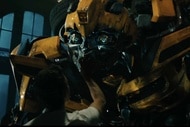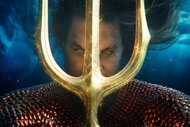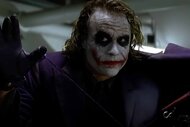Create a free profile to get unlimited access to exclusive videos, sweepstakes, and more!
Crisis on Infinite Earths fallout: The new state of the Arrowverse, explained

The Arrowverse crossover The CW has been teasing since the pilot episode of The Flash has finally come and gone. The Crisis on Infinite Earths is over, and The CW's superhero universe will never be the same. So, how can we make sense of this new status quo?
The small-screen version of Crisis took plenty of liberties when compared to its comic counterpart, but kept arguably the biggest aspect of the mid-1980s comic event once the dust had settled: Earth-Prime.
The multiverse is a comic book staple, and the Arrowverse was the first TV franchise to actually make it a crux of its storytelling. Characters have jumped from universe to universe on a weekly basis, with fans simply expected to be savvy enough to follow the twists and turns. Shows such as Supergirl and The Flash have crossed over plenty of times, despite their settings in different corners of the multiverse.
But that's over now, and as of the end of Crisis on Infinite Earths, everyone from Black Lightning to Batwoman is kicking around in the same United States, making it a whole lot easier to cross over when the story dictates. This also opens the door to share rogues galleries, just like in the comics.
The merging of the various Earths also follows a classic tenet of the comics — it just kind of happens, with all these various aspects from those universes (CatCo, LexCorp, the DEO, STAR Labs, Freeland, Star City, etc., etc.) now all thrown in a nebulous blender. It follows the same playbook as the countless DC and Marvel comic reboots we've seen over the years, with things just kind of … existing in a new state, with odd twists and turns slowly revealing themselves in this rewritten, almost rebooted reality.
It's made clear that this new world has its own history, which varies from the world the Paragons (aka the heroes involved in Crisis) remember. Which, again, is a hand-wavey comic book way to handle that. But there's no doubt it was the right call. The world at large is unaware of the insanity of Crisis and being erased from existence, but Martian Manhunter (David Harewood) made sure the core cast remembers the world before and everything that happened.
So basically, now the heroes of Black Lightning, Supergirl, The Flash, Arrow, Batwoman, and DC's Legends of Tomorrow seemingly remember both versions of reality.
Which is an important point to remember moving forward, because this Earth-Prime basically threw all the other universes in a blender, and it seems a few pieces of canon fruit got stuck on the blades along the way. This is a world close enough to the ones fans will know from the subsequent solo shows, with all the core casts still intact and alive, but just weird enough there will be fallout.
The biggest changes: Diggle's long-lost daughter Sara, erased during the Flashpoint, has been restored alongside his son Diggle Jr.; Lex Luthor (who was a Paragon and should remember everything about Crisis) is now a beloved humanitarian who just won the Nobel Prize; LexCorp now owns the DEO; and Clark and Lois apparently now have two sons instead of just one (that could be especially significant one, too, since their spinoff show just got a series pick-up).
Looking forward, this also makes crossovers even easier. The Arrowverse is now one world, bursting with superheroes in just about every major city. The final few moments of Crisis also officially established the Justice League (though admittedly not in name, but still). The heroes of this new world now have a meeting table to hash out big future crises as they arise. The remnants of Earth-1 also inherit arguably the biggest guns in the DC universe, with both Superman and Supergirl now zipping around alongside Flash and Batwoman.
So we have a new world with all the familiar faces and settings Arrowverse fans expect to find on The CW schedule. There's just one thing missing, the man who made it all possible: Oliver Queen.
Oliver actually died in Hour 1 of Crisis, giving his life to buy time for the people of Supergirl's world to evacuate before their universe was erased. But, this being the Arrowverse, that was far from the end of his story. Oliver becomes the Spectre in death and returns to help DC's mightiest heroes one last time, using his newfound powers to hold off the Anti-Monitor and light the spark to create this new, shared universe (dying again in the process).
It's a fitting end that the Arrowverse's OG hero would give his life to finally bring the world he birthed to its full potential. Arrow launched in 2012 as a gritty, grounded, Batman Begins-y action show. Over eight years it spawned about a half-dozen series and a universe that features some of DC's heaviest hitters. Having all these disparate universes brought together into one world goes to show just how deep and rich Arrow's legacy has become.
Much like his empty chair at the head of the new Justice League table, Oliver Queen will never be forgotten. But it's a testament to his legacy that the world he leaves behind is bold enough to survive without him.
As Oliver himself said in his second big-screen death of the Crisis (yeah, he got a few of them along the way): Dying's the easy part. It's living that's hard. If Earth-Prime is any indication, the Arrowverse has plenty of life left. Even without the "Arrow" part.

























